#The Stunning Ancient Greek Mosaics of Zeugma
Text
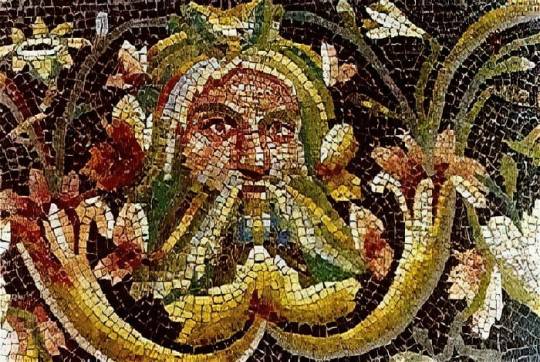
The Stunning Ancient Greek Mosaics of Zeugma
The ancient Greek mosaics of Zeugma in Turkey are true archaeological treasures that can still be admired at the Zeugma Mosaic Museum in Gaziantep, Turkey.
The 30,000-square-meter (320,000 square foot) museum, which opened its doors in September of 2011 is the largest mosaic museum in the world, containing 1,700 square meters (18,000 square feet) of ancient works of art.
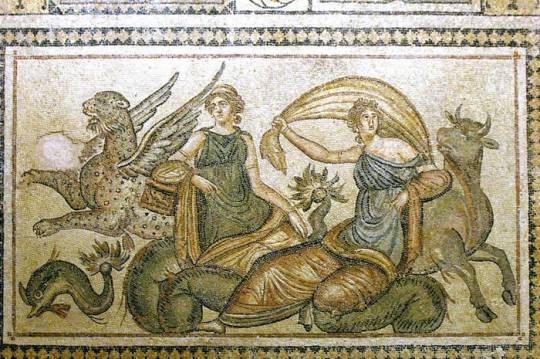
The museum focuses on the mosaics found in Zeugma, which was originally founded as Seleucia by Seleucus I Nicator, a general in Alexander the Great’s Army, in 305 BC.
After Alexander’s death, his generals divided his empire among themselves. Although Seleucus moved his main capital to Antioch, Seleucia became an important center of trade, Hellenistic culture, and regional government under the Seleucids.

The city was populated by Greeks, Syrians, and Jews. It was an affluent city with a population of eighty thousand and in the 2nd and 3rd century BC was of sufficient stature to be compared to another great center of Hellenism, Alexandria, in Egypt.
The Roman Empire’s forces conquered the city in 64 BC, renaming it Zeugma (meaning “bridge” or “crossing” in ancient Greek).
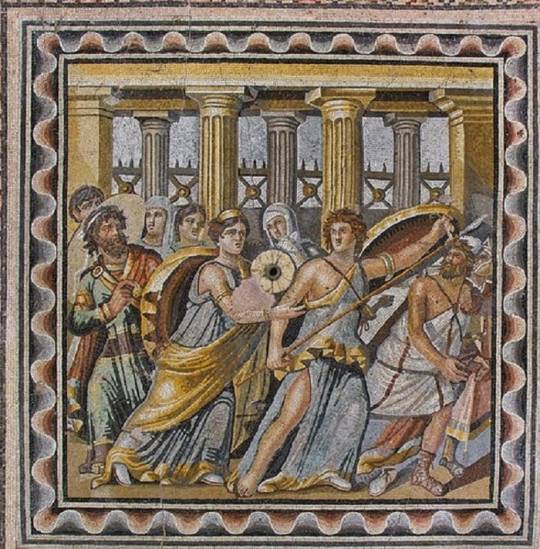
The Romans held Zeugma until 253 AD, when the Persian Sassanids conquered the city, putting a violent end to its most significant years.
The ancient Greek mosaics of Zeugma
The treasures of Zeugma, including its vaunted mosaics, remained relatively unknown until the year 2000. Zeugma is now eighty percent underwater after it was flooded with the waters of a nearby artificial lake.
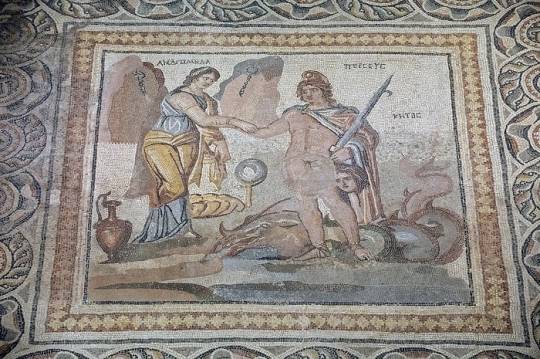
Archaeologists were alarmed at the flooding of the area and immediately began excavations to save the ancient treasures.
Most of the Greek mosaics of Zeugma, which were recovered in excellent condition, belong to the 2nd century BC preceding the Romans.

However, some of the mosaics appear to belong to the Roman era, as they depict Greek and Roman deities together.
In addition, some of the mosaics deviate from purely Hellenistic style and imagery, with archaeologists placing them in the Roman era of the city’s history.
The archaeological site of Zeugma
The archaeological site of Zeugma is a UNESCO World Heritage Center, located ten kilometers (six miles) away from Nizip within the boundaries of Gaziantep.
The preserved parts of the ancient city include the Hellenistic Agora, the Roman Agora, two sanctuaries, the stadium, the theater, two bathhouses, and the Roman legion military base.

Remains of the administrative structures of the Roman legion, the majority of the residential quarters, Hellenistic and Roman city walls, and the East, South and West necropolis can also be found there.
The archaeological site of Zeugma is of immense historical significance in the understanding of the ancient integration of Hellenistic and Semitic cultural spheres and the birth of syncretistic hybrid cultures in the region.
By Philip Chrysopoulos.
#The Stunning Ancient Greek Mosaics of Zeugma#Gaziantep Turkey#the largest mosaic museum in the world#Seleucus I Nicator#Alexander the Great#mosaic#ancient artifacts#archeology#archeolgst#history#history news#ancient history#ancient culture#ancient civilizations#roman history#greek history#greek art
145 notes
·
View notes
Text

Archeologists unearth 2200-year-old mosaics in an ancient Greek city named Zeugma in Gaziantep Province, Turkey. They have given us the opportunity to witness the unveiling of Greek and Roman art that hasn’t been seen in thousands of years. Three new mosaics have been discovered. They are unbelievable mosaics, dating back to the 2nd century BC, but incredibly well-preserved and look as beautiful and stunning as the first day.
19 notes
·
View notes
Text
Wow! Thank you😁❤️❤️❤️❤️
2,000-year-old mosaics uncovered in Turkey before being lost to flooding
These stunning 2000-year-old mosaics were uncovered by archaeologists in the Turkish city of Zeugma

Rich mosaics like these decorated people’s homes with characters from ancient Greek mythology
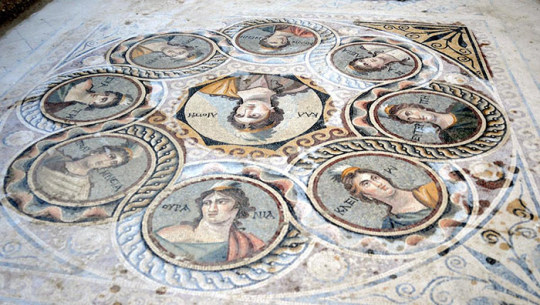
“They were a product of the patron’s imagination. It wasn’t like simply choosing from a catalog,” Professor Kutalmış Görkay told Archaeology.org

“They thought of specific scenes in order to make a specific impression. For example, if you were of the intellectual level to discuss literature, then you might select a scene like the three muses”

The archaeological community was inspired to excavate when they heard that the city was being flooded by a nearby dam

Here is the mosaic pictured above after being saved and restored
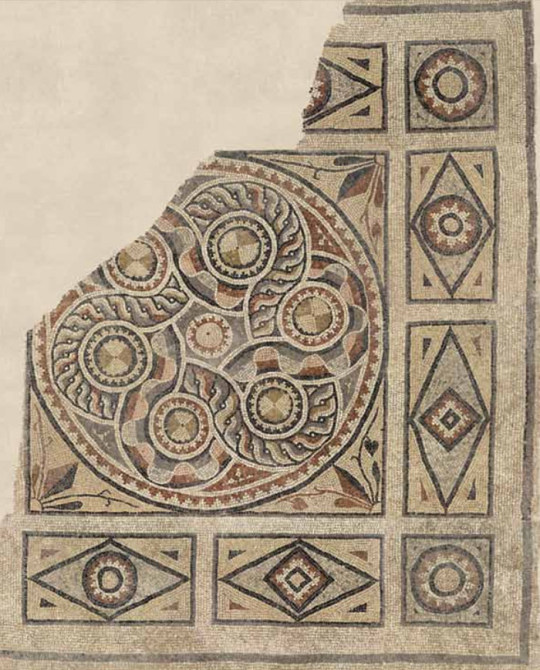
The Greeks named the city “Seleucia” when they founded it in the 3rd century BC
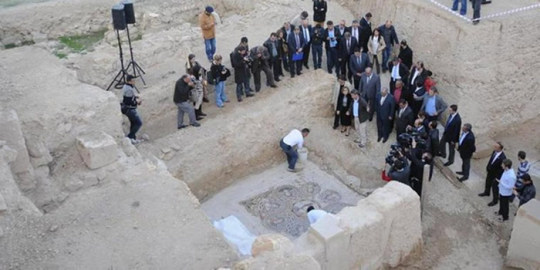
The Roman empire conquered the city in 64 BC, renaming it to Zeugma (meaning “bridge” or “crossing” in ancient Greek)

The Romans held the city until 253 AD, when Persian Sassanids took the city

Pictured here are Oceanus and Tethys, Ancient Greek and Roman ocean deities
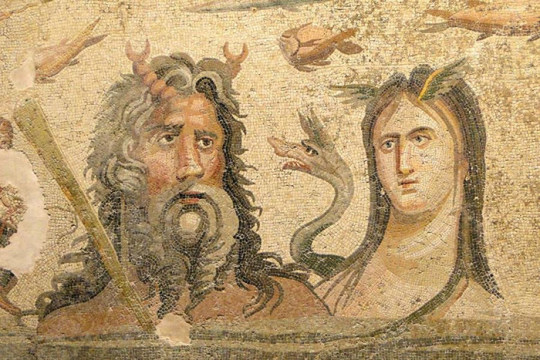
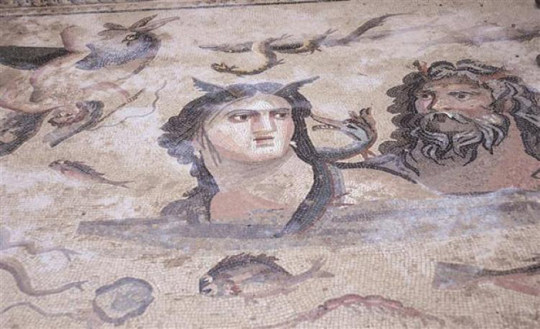
Pictured here is Poseidon, the god of the sea, on his war chariot

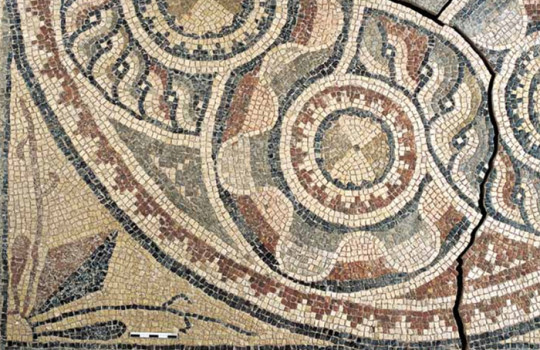
Meet Thalia, the muse of idyllic poetry and comedy

29 notes
·
View notes
Text

Stunning mosaics discovered in Ancient Greek city of Zeugma in Turkey.
0 notes
Text
Stunning 2200-Year-Old Mosaics Discovered in Ancient Greek City Of Zeugma
New mosaics were recently discovered in the ancient Greek city of Zeugma, which is located in the present-day province of Gaziantep in southern Turkey. http://dlvr.it/NdY5Qq
0 notes
Link
Three new mosaics were recently discovered in the ancient Greek city of Zeugma, which is located in the present-day province of Gaziantep in southern Turkey. The incredibly well-preserved mosaics date back to 2nd century BC. Zeugma was considered one of the most important centers of the Eastern Roma... http://ift.tt/2jEY12K
0 notes
Photo
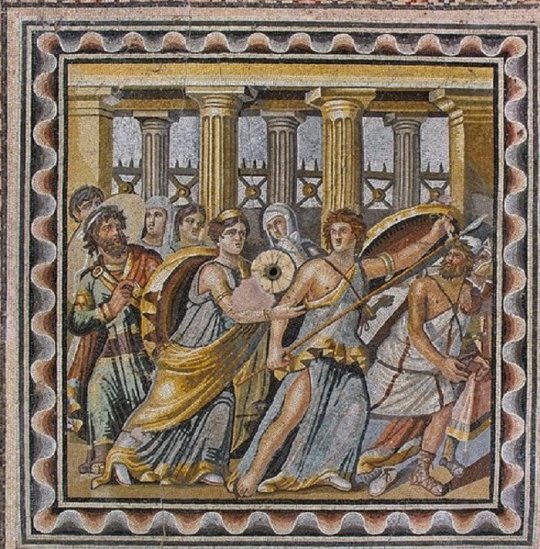
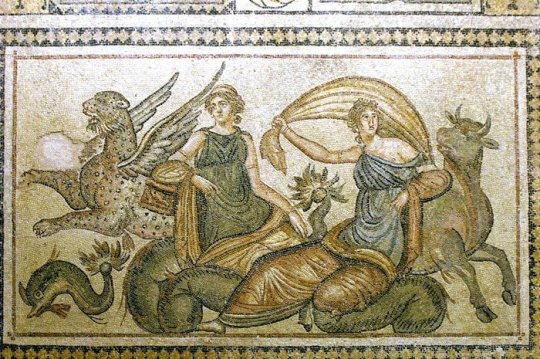





The Stunning Greek Mosaics of Zeugma
The Ancient Greek mosaics of Zeugma in Turkey are true archaeological treasures that can thankfully still be admired at the Zeugma Mosaic Museum in the town of Gaziantep, Turkey.
The 30,000-square-meter (320,000 square foot) museum, which opened its doors in September of 2011, is the largest mosaic museum in the world, containing 1,700 square meters (18,000 square feet) of the ancient works of art.
The museum focuses on the mosaics found in Zeugma, which was originally founded as Seleucia by Seleucus I Nicator, a general in Alexander the Great’s Army, in 305 BC.
After Alexander’s death, his generals divided his empire among themselves. Although Seleucus moved his main capital to Antioch, Seleucia became an important center of trade, Hellenistic culture, and regional government under the Seleucids.
The city was populated by Greeks, Syrians and Jews. It was an affluent city with a population of 80,000 and in the 2nd and 3rd century BC was of sufficient stature to be compared to another great center of Hellenism, Alexandria, in Egypt.
The Roman Empire’s forces conquered the city in 64 BC, renaming it Zeugma (meaning “bridge” or “crossing” in ancient Greek).
The Romans held Zeugma until 253 AD, when the Persian Sassanids conquered the city, putting a violent end to its greatest years.
The ancient Greek mosaics of Zeugma
The treasures of Zeugma, including its vaunted mosaics, remained relatively unknown until 2000. Zeugma is now 80 percent underwater, after it was flooded with the waters of a nearby artificial lake.
Archaeologists were alarmed at the flooding of the area and immediately began excavations to save the ancient treasures.
Most of the Greek mosaics of Zeugma — which were recovered in excellent condition — belong to the 2nd century BC, preceding the Romans.
However, some of the mosaics appear to belong to the Roman era, as they depict Greek and Roman deities together.
In addition, some of the mosaics deviate from purely Hellenistic style and imagery, with archaeologists placing them in the Roman era of the city’s history.
The archaeological site of Zeugma
The archaeological site of Zeugma is a UNESCO World Heritage Center, located 10 kilometers (six miles) away from Nizip, within the boundaries of Gaziantep.
The preserved parts of the ancient city include the Hellenistic Agora, the Roman Agora, two sanctuaries, the stadium, the theater, two bathhouses, and the Roman legion military base.
Remains of the administrative structures of the Roman legion, the majority of the residential quarters, Hellenistic and Roman city walls, and the East, South and West necropolis can also be found.
The archaeological site of Zeugma is of immense historical significance for understanding the ancient integration of Hellenistic and Semitic cultural spheres and the birth of syncretistic hybrid cultures in the region.
By Philip Chrysopoulos.
#The Stunning Greek Mosaics of Zeugma#art#artist#art work#art news#history#history news#ancient history#ancient culture#ancient civilizations#greek art#greek culture#greek history#alexander the great#roman art#roman culture#roman history#roman empire#beauty#sexy
18 notes
·
View notes